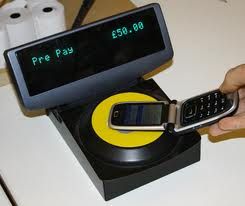Android security has come under the spotlight again after the Pwn2Own contest in Amsterdam revealed an Android hack via NFC technology intended for easy payments.
Using two vulnerabilities in the Samsung Galaxy S3 smartphone, researchers from UK-based security consultancy MWR InfoSecurity used the near-field communication (NFC) protocol to transmit their attack, according to statements by the company and Hewlett-Packard’s TippingPoint, the contest organiser.
Google has focused on the NFC protocol as the technology for pay-by-phone transactions for its Google Wallet application.
Android Hack
“Through NFC, it was possible to upload a malicious file to the device, which allowed us to gain code execution on the device and subsequently get full control over the device using a second vulnerability for privilege escalation,” MWR InfoSecurity said in a statement. “The same vulnerability could also be exploited through other attack vectors, such as malicious Websites or email attachments.”
 The attack appears similar to techniques presented by Charlie Miller, a researcher formerly with Accuvant Labs and now Twitter, at the Black Hat Security conference in July. In that demonstration, Miller was able to show the ability to make phones open up images, contacts and Web pages, all without notifying the user.
The attack appears similar to techniques presented by Charlie Miller, a researcher formerly with Accuvant Labs and now Twitter, at the Black Hat Security conference in July. In that demonstration, Miller was able to show the ability to make phones open up images, contacts and Web pages, all without notifying the user.
NFC is a technology that allows data to be sent over very short distances. For mobile devices, the protocol allows digital wallet applications to transfer money to pay at the register. While the technology has been slow to take off, despite the adoption by Google for its Wallet payment application, a number of recent high-profile announcements have boosted its adoption. In 2017, nearly one out of every four phones in the United States and Europe will have the technology and nearly $1.3 trillion (£802bn) in payments will be processed, according to Juniper Research.
One major phone maker has not yet jumped on the bandwagon: Apple. In its latest announcement of the iPhone 5, the company neglected to mention any support for NFC, despite recent patent filings that seem to indicate it plans to support the protocol.
Security Conference
The 19 September hack of the Samsung device happened at the EUSecWest conference, an annual meeting of security researchers in Amsterdam.
The Pwn2Own hacking competition, run by HP’s TippingPoint unit and its vulnerability buying program Zero Day Initiative, has focused on laptop operating systems and browsers in the past. With support from BlackBerry maker Research In Motion, the company focused on mobile devices this year.
“Despite some Layer 1 issues messing with the payload, the Galaxy S3 ultimately fell to @mwrlabs,” the Zero Day Initiative posted on Twitter. “Congrats guys!”
As part of the Pwn2Own contest, the researchers will share a $30,000 (£18,547) prize and must withhold details of the vulnerability until it is patched. The team did release some broad details of how they compromised the phone, however.
“The first vulnerability was a memory corruption that allowed us to gain limited control over the phone,” MWR InfoSecurity said in its statement. “We triggered this vulnerability 185 times in our exploit code in order to overcome some of the limitations placed on us by the vulnerability. We used the second vulnerability to escalate our privileges on the device and undermine the application sandbox model.”
In addition to the Android operating system, Apple’s iOS 5 was hacked by a team of Dutch researchers using a vulnerability in Webkit, open-source software that is used to render HTML code in a number of applications, including Safari, iTunes and Windows Messenger. The exploit would work on Apple’s forthcoming operating system, iOS 6, as well, the researchers reportedly stated.
How much do you know about smartphones? Take our quiz!




